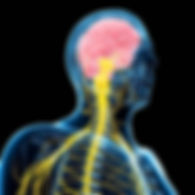
Our Blog
An ongoing series of informational entries

Live Fit – Live Active
December 30, 2022
Dieting and exercise go hand in hand. Age is just a mindset. If you thought that only dieting
burns your belly fat, you are wrong. If you really want to lose weight, you need to include an
hour of daily exercise that targets and reduces belly fat. Here is a list of five exercises that can
help you reduce belly fat.
Walking
Running
Jogging
Cycling
Swimming
Nothing burns belly fat faster than crunches, which occupy the number one position in fat-
burning exercises. Now, it is time to start performing these recommended exercises.
Crunches
Twist Crunches
Side Crunch
Reverse Crunches
Vertical Leg Crunch
Bicycle Exercise
Lunge Twist
Rolling Plank Exercise
The Stomach Vacuum
Captain’s Chair
Bending Side-to-Side

Three Signs You May Be Experiencing Permacrisis
By Rebeccah Silence
Author, Coming Back to Life
December 15, 2022
Collins Dictionary named ‘Permacrisis’ as the word of the year for 2022. By definition, permacrisis is “an extended period of instability and insecurity, especially one resulting from a series of catastrophic events.” It is common for people to live their life stuck in crisis mode, continuously unhappy but it does not have to be that way. As someone who has overcome a lifetime of trauma, I would not wish permacrisis on anyone. But I also know there are ways around and through it.
Here is how to tell if you’re experiencing permacrisis, and how to combat it.
1.Your Body and Nervous System are in Fight-Flight-Freeze Mode
When experiencing permacrisis, your nervous system cannot regulate properly, which brings your body into fight-flight-freeze mode, and when that happens you often can see no other way out. You are hyper-vigilant and hyper-focused on survival, which can intentionally or unintentionally cause you to push people away. You may find yourself on one end of the spectrum, having zero boundaries, or the reverse case when you have so many boundaries that there is no way anyone can get close to you.
2.You Feel Younger than you really are (and not in a good way)
Triggers are common and during a trigger fear has taken over your brain and what is happening in your life is re-activating a past wound. When this happens, you’re emotionally regressing in age as you are taken back to however old you were at the time when you first experienced the crisis or trauma. This version of you may be much different than the empowered person or adult that you know yourself to be today.
3.You Feel Stuck in a Never-Ending Pattern of Crisis and Trauma
Without meaning to, many people are experiencing a constant state of instability, unconsciously expecting a past and former crisis to repeat, anticipating the next crisis, or they have not recovered from a previous crisis (for example divorce, health diagnosis, losing a child or loved one, or abuse). The fact is all crises have a beginning, middle, and end. Unimaginable and painful experiences happen, but trauma and crisis do not have to define us, do not have to limit us, and do not mean we are destined for less of a life. Crisis can allow us to become even more alive so that if in the future another similar situation occurs, we no longer feel like the sky is perpetually falling and instead we remember how capable we are.
Escaping Permacrisis
Society tells us that it is nearly impossible to fully recover from crisis or trauma, but permacrisis is a permanent state of crisis that is flat-out unnecessary, and there are ways to manage it. Several methods are outlined in the book Coming Back to Life, but they all circle back to one key takeaway: you deserve to be free from past trauma. Healing is possible. You are more powerful than anything you have survived.
How you respond to the crisis at hand is what matters most. When you are not calm, cool, collected, and neutral, you are giving your power away to the situation. It helps to find out exactly what triggers you, feel the emotions you do not want to feel, and visualize what the future you looks like. A crisis does not have to be an obstacle. Instead, think of it as an opportunity for a wake-up call, and a chance to take your power back again, and again.

Anxiety is on the Attack, with One in Five Struggling Worldwide
By Cheryl Accardi
Mental Health Coach, Advocate, Speaker
Founder & President Anxiety Aide
December 1, 2022
Anxiety is an uncomfortable emotion characterized by the feeling of fear. It sounds simple enough. All of us, at one time or another, have felt it, whether before a big test, performing on stage, or public speaking.
Anxiety, a synonym of worry, refers to uneasiness, fear, and apprehension over
an unknown danger. Technically, in anxiety, the cause is not known. In fear, the
cause is known. Anxiety is a symptom, not a diagnosis of many emotional
disorders, is a broader term than worry, and is mental but often has physical
symptoms. But for many anxiety affects their ability to function in everyday life. When your anxiety does attack here are some things you can do to redirect yourself.
1. Perform a “thinking task.”
Anxiety arises from limbic functioning. The limbic system is comprised of several brain regions, including the amygdale, to mediate functions such as emotional regulation and sustained attention, among others. There is a feedback loop between the limbic system and the frontal lobes, which plays a significant role in executive functioning (e.g., problem solving, sequential processing, analysis and synthesis of information, plan making). When frontal regions increase in activity, limbic regions decrease in activity. Hence, our emotionality tends to regulate when we become involved in executive activities.
2. Exercise
Anxiety engages the “hypothalamic-pituitary-adrenal axis” (i.e., the HPA axis). The HPA axis controls the body’s response to stress. When the HPA activity becomes elevated, large amounts cortisol is produced and released. The presence of high levels of cortisol corresponds with inefficient cognitive processing. Exercise “burns off” cortisol in the body. Exercise also causes large muscle groups to relax, and often serves as an effective distraction from self-monitoring.
3. Sleep and diet
The brain requires resources for typical daily function. With inadequate sleep or nutrients, cognitive efficiency drops. Not only may this manifest in impaired executive functioning, but it may also lead to inefficient emotional regulation.

Best Vegetables to Juice
November 7, 2018
If you've never tried vegetable juice before, a favorite beginner's juice is made from carrots. However, it is important to note that not all carrots taste the same and it is no different for the juice they produce. Across the board, most people enjoy the sweet juice rendered by carrots grown in California.
Most vegetables can be juiced but people devoted to juicing recommend the following for people just starting out:
• Red Romaine
• Green Romaine
• Escarole
• Carrots
• Celery
• Cucumbers
• Beets
• Wheatgrass
• Parsley
• Garlic
Dr. Walker's books include tables that explain ratios and combinations of different juices to help specific health conditions. For example, adding beet to your juice is said to help kidney disorders.
An ongoing series of informational entries
Iridology!! a Great Scientific Health Issue
October 30, 2018
What is Iridology? Iridology is the study of the iris, or colored part, of the eye. This structure has detailed fibers and pigmentation that reflects information about our physical and psychological makeup. It identifies inherited dispositions (how our body reacts to our environment and what symptoms to expect), and future challenges (where we are likely to have more problems as we age). It also helps identify inherited emotional patterns, which can create or maintain physical symptoms, as well as identify lessons or challenges and gifts or talents available to us.
● In general, prevention is the object of an Iridology reading.
Iridologists want to warn the patient about tendencies and weaknesses so the patient can fend off illness and disease before it begins. Others view it as an indicator, like a blood pressure cuff or a thermometer. In fact, Iridologists claim that defects in the iris will show up long before changes in traditional lab values. However, treatment is not the main goal; rather, prevention is.

